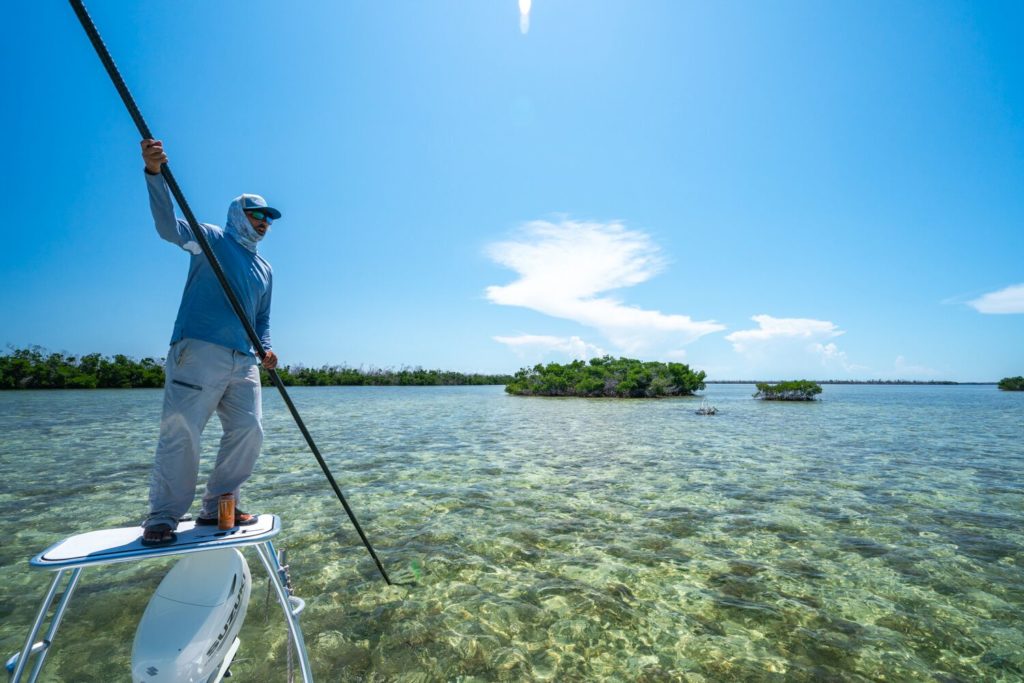Photo: Ian Wilson
In August, the Florida Keys National Marine Sanctuary released a draft of their new management plan. If you fish the flats in the keys, this management plan should be on your radar. The Sanctuary is one of five management agencies charged with protecting the Florida Keys fish, wildlife, and the habitats that support them. Governed by National Oceanic and Atmospheric Administration (NOAA), the Sanctuary boundary surrounds Monroe county, Biscayne Bay to the north, and west of Dry Tortugas. The mission of the Sanctuary is to balance marine use with conservation. To achieve their mission, the Sanctuary limits marine activities that stress and or damage environmentally sensitive habitats that support important fish and wildlife. To limit damaging marine use, the Sanctuary draws boundaries around important areas and then implements regulations like “idle speed”, “no anchor”, “no motor”, “no entry” and “no fishing” to reduce stress on those places.
When done properly, this management approach can provide needed protection for our flats fisheries. For instance, flats that are damaged by propeller scarring can be designated as no motor zones (prohibit use of combustion engines) that allow poling and the use of trolling motors. On the flip side, the management plan has the regulatory capacity to take away fishing access to areas that are responsible for making the Florida Keys a world-class flats fishing destination. An interactive map of the sanctuary’s management plan is accessible HERE. A video about the Sanctuary is available HERE.
Over the next several weeks, we will post a series of blog posts that discuss and review: 1) elements of the management plan that we think will benefit the flats fishery through habitat protection; 2) elements of the plan that we think impose access restrictions to key fishing areas without ecological benefit and without consideration for acceptable uses; 3) additional zones that should be added to the plan to better protect our flats fish and habitats; 4) and an improved water quality monitoring program that must be added to the final management plan.
Because this plan has the capacity to impact the livelihoods, culture, and the economy of the Florida Keys, the Sanctuary will work with the public over the next year to find the optimal balance between marine use and the long-term conservation of our natural resources. The revisions process will be broken up into two parts. First, the Sanctuary will take public comment on the first Restoration Blueprint until January 31, 2020. After the January 31 deadline, Sanctuary staff will incorporate recommendations they received from the public and revise their draft management plan accordingly. Then, the Sanctuary will release a second draft management plan, and ask for public input again. You can provide feedback to the Sanctuary online by going to the federal eRulemaking Portal, www.regulations.gov. Find the Florida Keys National Marine Sanctuary’s public comment page and use the docket number NOAA-NOS-2019-0094.
It is vital that all of us get involved and provide input to the Sanctuary. The Sanctuary will not make management decisions by tallying up how many public comments are in support or in opposition of the draft plan. Instead, the Sanctuary is giving preference to recommendations that are based on sound science as well as personal experiences, where you explain how and in what ways proposed regulations will affect your recreational experience or your business. This series of blogs is meant to provide a concise overview of draft sanctuary management plan from the science and flats fishing perspective, and hopefully as an information source that helps you craft an effective public comment. In about 10 months, what the Sanctuary proposes in their management plan will become law. We have the potential to gain considerable ground in habitat protection for our fishery, but we also have a lot to lose. We must be professional and work within the system to get effective change that balances habitat protection with fisheries access.




